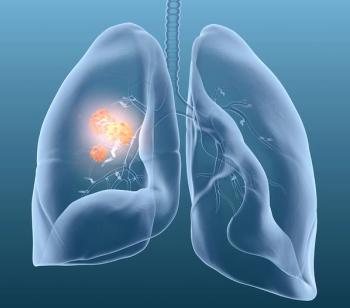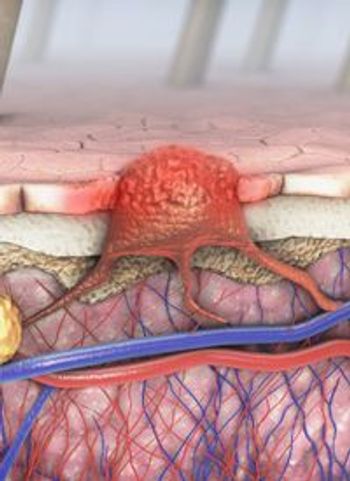
Oncology NEWS International
- Oncology NEWS International Vol 6 No 6
- Volume 6
- Issue 6
AACR Meeting Sees Growth Spurt in Telomerase Research
SAN DIEGO--Research involving telomerase, the protein thought to be responsible for cancer cell immortality, is experiencing explosive growth, and nowhere was that more evident than at the annual meeting of the American Association for Cancer Research (AACR).
SAN DIEGO--Research involving telomerase, the protein thought to beresponsible for cancer cell immortality, is experiencing explosive growth,and nowhere was that more evident than at the annual meeting of the AmericanAssociation for Cancer Research (AACR).
At the conference, more than 150 symposiums, papers, and lectures weredevoted to telomerase studies. In contrast, two years ago there were justfour or five presentations at the poster sessions, while last year thenumber inched up to two dozen or so.
At next year's spring meeting, there very well could be up to 300 telomerasepresentations, predicted Jerry W. Shay, PhD, professor of cell biology,University of Texas Southwestern Medical Center, Dallas. "This isone of the most exciting advances in cancer biology to emerge in the lastdecade," said Dr. Shay, who estimates that anywhere from 500 to 1,000studies internationally are now focusing on telomerase activity.
Detailed Definitions of Telomere and Telomerase
Telomeres are repeated DNA sequences [(TTAGGG)n in humans] foundat the ends of linear chromosomes that protect the ends of the chromosomefrom degradation. Telomeres may determine how many times an individualcell can divide.
At birth, as determined by terminal restriction fragment analysis, telomeresconsist of about 15,000 base pairs of repeated TTAGGG DNA sequences, whichbecome shorter with each cell division due to the end replication problem.
Every time a cell divides, it loses 25 to 200 DNA base pairs off thetelomere ends. Once this pruning has occurred about 100 times, a cell undergoessenescence (or aging) and does not continue dividing.
Telomerase, or telomere terminal transferase, is a ribonucleoproteinenzyme (composed of both RNA and proteins) that uses its internal RNA component(complementary to the telomeric single stranded overhand) as a templatein order to synthesize telomeric DNA (TTAGGG)n directly onto the ends ofchromosomes.
Telomerase is present in most fetal tissues, normal adult male germcells, inflammatory cells, proliferative cells of renewal tissues, andmost tumor cells.
After adding six bases, the enzyme is thought to pause while it repositions(translocates) the template RNA for the synthesis of the next six basepair repeats. This extension of the 3´ DNA template end, in turn,permits additional replication of the 5´ end of the lagging strand,thus compensating for the end replication problem. Telomer-ase is oftenreferred to as an immortalizing enzyme.
There is adequate support, he noted, for all the attention. His recentcompilation of published studies through the end of 1996 found that telomeraseactivity was present in 85% (1,734/2,031) of primary human tumors and inless than 1% (1/196) of somatic tissue samples, except for proliferativecells of renewal tissues.
Dr. Shay said that telomerase activity has been detected in preinvasivelesions of such cancers as breast and lung in 30% (123/410) of cases. Inother cancers such as pancreatic and colon cancer, it appears in 90% to95% of early stage carcinomas, but not in preneoplasia. There are insufficientor conflicting data on ordinary meningiomas and on renal, ovary, prostate,and stomach cancers.
There is also evidence in neuroblastoma, acute myeloid leukemia, breastcancer, and gastrointestinal cancers that the presence of high levels oftelomerase correlates with poor patient prognosis.
"There is a great deal of momentum among pharmaceutical companiesto identify telomerase inhibitors," Dr. Shay said. At least a dozencompanies are working to develop these drugs, and he estimates that clinicaltrials could start in four or five years, if not earlier.
Among the many scientists presenting findings on telomerase researchwas Eiso Hiyama, MD, of Hiroshima University School of Medicine, Japan,who has collaborated with Dr. Shay.
In his research, Dr. Hiyama attempted to measure whether telomeraseactivity could be used as a biomarker in pancreatic duct samples for theaccurate diagnosis of early pancreatic cancer.
His lab detected telomerase activity in 95% of 43 pancreatic cancerspecimens using the TRAP (telomeric repeat amplification protocol) assay,and did not detect such activity in any benign tumors.
Ex vivo pancreatic duct brushing was performed on the resected pancreatictissues of 12 patients immediately after surgery. Telomerase activity wasdetected in all eight samples with pancreatic cancer but was undetectablein all four samples with benign disease, Dr. Hiyama said.
In 31 in vivo brushing samples obtained by endoscopy, 12 of 13 telomerase-positivesamples were determined at surgery to be pancreatic cancer, and the remainingtelomerase-positive case has been followed without surgery because cytologicexam found no malignancy.
On the other hand, all 18 telomerase-undetectable samples were cytologicallynegative, and of the six patients who have undergone surgery, all wereshown to have benign disease. "These findings," Dr. Hiyama concluded,"suggest that telomerase activity in cells derived from pancreaticducts may be a useful marker in the diagnosis of pancreatic cancer."
Articles in this issue
over 28 years ago
Studies of Counselings' Impact on Survival Challengedover 28 years ago
Telomerase Activity Potential Marker for Bladder Cancerover 28 years ago
Writing Genetic Testing Guidelines Complex Endeavorover 28 years ago
DDT Appears to Activate Human Estrogen Receptorsover 28 years ago
Studies Highlight Role of bcl-2 Gene in Programmed Cell Deathover 28 years ago
Efficacy of BCG Maintenance in Bladder Cancer Is Confirmedover 28 years ago
Surgery Seen as Adjunct to Chemo in Some Invasive Breast Cancersover 28 years ago
Traveling Exhibit of Cancer Educational Resourcesover 28 years ago
History of Substance Abuse Not a Barrier to Opioid UseNewsletter
Stay up to date on recent advances in the multidisciplinary approach to cancer.
































































































